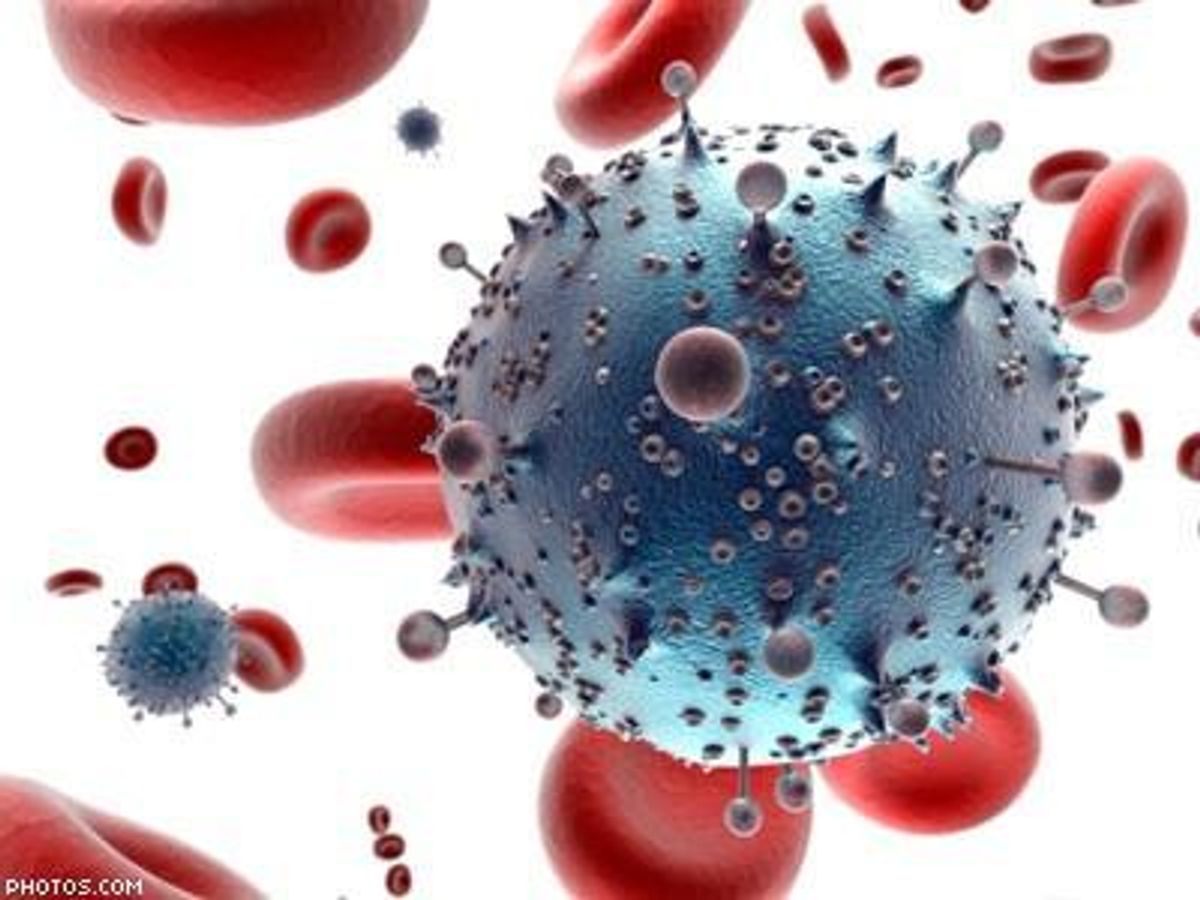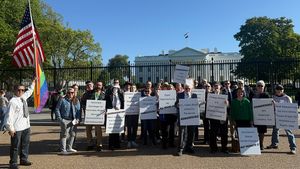While the International AIDS Conference, CROI, and IAS Conference on HIV Pathogenesis, Treatment and Prevention are the most well known HIV conferences that take place every year or every two years, respectively, smaller, lesser known HIV conferences take place almost every month around the world. These conferences receive no coverage in the HIV media, despite the important presentations given by key opinion leaders at these meetings.
One of my favorite conferences is the HIV DART conference that takes place every two years and never disappoints. An intimate gathering of approximately 300 world–renowned leaders in drug development and HIV research, HIV DART is the go-to conference for advances in developments in antiretroviral therapy and leading issues affecting people living with HIV. Here are the developments from HIV DART 2014, which took place in December and was, for the first time, co-sponsored by AmfAR.
FINDING AN HIV CURE
The conference kicked off with the Gertrude Elion Distinguished Lecturer Award presentation by Sharon Lewin, MD, Co-Chair of AIDS 2014 and a leader in HIV cure research. Dr. Lewin discussed what is thought to be the greatest barrier to developing a cure for HIV, latent infection. HIV establishes latent reservoirs in resting CD4+ T cells, which is facilitated by .CCR7, CXCR3 and CCR5. One of the major questions being explored is the role played by tissue repositories in latent infection. There is evidence of ongoing viral replication in patients who have achieved durable viral suppression on cART.
Strategies being explored to activate latent HIV infection are HDAC inhibitors, cytokines and disulfram. The most focus has been placed on HDAC inhibitors, which have been shown to change host gene expression, so the long-term safety of their use is unclear. Can we do better than HDAC inhibitors? High dose disulfram may prove to be a better approach, as well as the identification of compounds that have specificity for the HIV LTR, PKC, cytokines and other strategies that induce T cell activation. Dr. Lewin posed the question of whether activation of latent viremia will be enough to achieve HIV eradication, with trials to date showing the need for additional interventions such as therapeutic vaccines.
Tomas Cihlar, PhD from Gilead presented on advances in targeting viral reservoirs for achieving HIV cure or remission. HIV reservoirs are persistent, heterogenrous, dynamic, and not effectively detected by the immune system. Reservoirs are established in resting T cells, macrophages, microglia and hematopoietic stem cells. The two strategies currently being researched for developing an HIV cure are “kick and kill” and the induction of effective HIV-specific immunity and gene therapy strategies. Latency reversing agents, the “kick” part of the “kick and kill strategy”, should lead to viral presentation but will likely not be enough to clear the latent reservoir so there should be engagement og some part of the immune system. Strategies currently being explored include the use of epigenetic modulators, kinase activators, cytokines and other small molecules. Studies have found that a PD-1 antibody reduces viral set point following the discontinutation of ART.
Geoff Symonds, PhD, CSO of Calimmune presented on the company’s cell-delivered gene therapy to modify CD4+ T cells and CD34+ stem cells. Cal-1 uses a lentiviral vector and C46 to inhibit viral fusion. Studies with sh5 and C46 have demonstrated efficacy and no toxicity. Cal-1 induces CCR5 knockdown and C46 expression in HIV PBMCs. The initial focus for the use of this promising HIV therapeutic candidate is on patient segments with unmet needs and patients off ART. Calimmune is conducting a Phase I/II study in the U.S. and a Phase I/II study in Australia.
Mario Stevenson, PhD, Chair of AmfAR’s Scientific Advisory Board and Chief of the Division of Infectious Diseases at the University of Miami presented on the role of macrophages as an important HIV reservoir. Macrophages play a role in viral persistence even in patients who have achieved durable viral suppression, which has been demonstrated by the rapid viral rebound that occurs in patients who stop ART. Macrophages present unique obstacles to infection by primate lentiviruses such as HIV. HIV has the ability to access the nucleus of non-dividing cells and can get reverse transcriptase into the nucleus. The HIV protein Vpr allows for infection of macrophages, which are a reservoir for HIV in infected individuals. Pharmacologic interventions currently being explored include C-fms antagonists, and Plexxicon’s C-fms inhibitors have been found to induce the death of HIV infected macrophages. The Delaney AIDS Research Enterprise is studying the role of macrophages in viral persistence and strategies for eradicating this viral reservoir.
TREATING CO-MORBIDITIES
Michael Lederman, MD, Professor of Medicine, Case Western Reserve University School of Medicine delivered a presentation on inflammation in treated HIV infection. Immune activation, inflammation and coagulation are central to HIV pathogenesis. Many age-associated diseases are more common in people living with HIV than in uninfected individuals, including CVD, cancer, bone fracture, lung disease, liver failure and cognitive decline. The SMART trial found that markers of inflammation and coagulation are linked in treated HIV infection. There are many possibilities for what is driving the inflammation experienced by HIV patients even in those who have achieved durable viral suppression.
Victor Valcour, MD, POSITION, presented on NeuroAIDS. There is a high frequency of HIV neuropathy in white matter and deep grey matter in the brain. HIV-associated cognitive impairment is subcortical. HIV-associated neurocognitive disorder (HAND) has two categories: mild and severe. HAND persists despite effective treatment with ART and the CHARTER study found that 50 percent of people living with HIV have some form of cognitive impairment. This is particularly a problem in the aging HIV population. Patients with asymptomatic neurocognitive impairment (ANI) perform as poorly on tests of functioning as people with mild neurocognitive dysfunction (MND). This problem is linked with inflammation, but the causes of hand are multi-factorial and include toxicity from ARVs, persistent inflammation, the upregulation of certain proteins, cerebrovascular disease, white matter injury in the brain and broad abnormalities in fractional anistrophy in HIV. It has been found that cognitive function actually improved when patients stopped ART. While there is a need for greater research on the causes and potential treatments for HAND, the International NeuroHIV Cure Consortium was established by the NIH anad NIMH to focus exclusively on this problem.
NEWS ON ANTIRETROVIRAL THERAPY
 Mark Wainberg, PhD, Director of the McGill University AIDS Center delivered a presentation on drug resistance focused on dolutegravir, the newest ARV. He posed the question of what if new integrase inhibitors were impervious to the problem of drug resistance? Only one mutation confers resistance to dolutegravir, the R263K mutation, while there are multiple resistance mutations for the other integrase inhibitors. He theorized the reasons for this may be a high barrier to resistance, there may be a cellular target as well or maybe something else is going on. The SAILING study looked at patients who were previously exposed to a wide arrange of ARVs but no integrase inhibitors. In the study two patients developed the R263K mutation. One hypothesis for this is that viruses with this mutation are so unfit they are not seen in clinical samples. This is the first time a second mutation that confers resistance makes a virus less fit, whereas with all other ARVs a second resistance mutation increases viral fitmess.
Mark Wainberg, PhD, Director of the McGill University AIDS Center delivered a presentation on drug resistance focused on dolutegravir, the newest ARV. He posed the question of what if new integrase inhibitors were impervious to the problem of drug resistance? Only one mutation confers resistance to dolutegravir, the R263K mutation, while there are multiple resistance mutations for the other integrase inhibitors. He theorized the reasons for this may be a high barrier to resistance, there may be a cellular target as well or maybe something else is going on. The SAILING study looked at patients who were previously exposed to a wide arrange of ARVs but no integrase inhibitors. In the study two patients developed the R263K mutation. One hypothesis for this is that viruses with this mutation are so unfit they are not seen in clinical samples. This is the first time a second mutation that confers resistance makes a virus less fit, whereas with all other ARVs a second resistance mutation increases viral fitmess.
Rob Murphy, MD, Chair of the Executive Committee of the ACTG and Director of the Center for Global Health at Northwestern University presented on class-sparing strategies. He emphasized the point that in optimizing treatment strategies, less is more. HIV treatment in 2014 is characterized by multiple classes of drugs, convenience and expense. ART can now be individualized and there is no one preferred regimen for everyone. He cautioned, however, that today’s regimens are tomorrow’s problems. Class-sparing strategies include protease inhibitor monotherapy, dual NRTIs, one protease inhibitor plus an NRTI and a protease inhibitor with an integrase inhibitor. There are several studies that have looked at treatment simplification, including A5201, GARDEL, MONET, MONOI, OLE and EARNEST. Studies have found that two drug regimens are just as effective as three drug regimens and have less side effects. When it comes to ART, there is no one size fits all.
Luis Soto Ramirez, MD, POSITION, presented on options for salvage therapy combinations. Salvage therapy is defined as less than three active drugs for first- and second-line treatment. He emphasized the importance of having two active ARVs in patients with multidrug resistance. Salvage therapy requires two fully active agents. It is recommended to use a fully active boosted protease inhibitor in a salvage therapy regimen. He advised avoiding or limiting the use of NRTIs. Studies that have been conducted in highly treatment-experienced patients include the PROGRESS study, SECOND-LINE study and OPTIONS study. Research has found that it is better to use raltegravir with two active drugs. The use of less than three fully active ARVs, including a boosted protease inhibitor, is enough to maintain viral suppression in patients with multiple treatment failures and triple class resistance. The HIV pipeline is as thin as it has ever been, and the overwhelming majority of drugs in development are for treatment-naïve patients. There is an urgent need for new ARVs for drug resistant treatment-experienced patients.
THE BOTTOM LINE
There were many important presentations by key opinion leaders at HIV DART 2014 on HIV cure research and developments in antiretroviral therapy. HIV DART is one of the lesser-known but most important HIV conferences. There is a need for federal HIV cure research programs to focus on an array of strategies to eradicate HIV, including eradication of HIV in macrophages and gene therapies, and for clinicians to simplify and tailor HIV treatment to individual patient needs. The next HIV DART conference will take place in December 2016.

 Mark Wainberg, PhD, Director of the McGill University AIDS Center delivered a presentation on drug resistance focused on dolutegravir, the newest ARV. He posed the question of what if new integrase inhibitors were impervious to the problem of drug resistance? Only one mutation confers resistance to dolutegravir, the R263K mutation, while there are multiple resistance mutations for the other integrase inhibitors. He theorized the reasons for this may be a high barrier to resistance, there may be a cellular target as well or maybe something else is going on. The SAILING study looked at patients who were previously exposed to a wide arrange of ARVs but no integrase inhibitors. In the study two patients developed the R263K mutation. One hypothesis for this is that viruses with this mutation are so unfit they are not seen in clinical samples. This is the first time a second mutation that confers resistance makes a virus less fit, whereas with all other ARVs a second resistance mutation increases viral fitmess.
Mark Wainberg, PhD, Director of the McGill University AIDS Center delivered a presentation on drug resistance focused on dolutegravir, the newest ARV. He posed the question of what if new integrase inhibitors were impervious to the problem of drug resistance? Only one mutation confers resistance to dolutegravir, the R263K mutation, while there are multiple resistance mutations for the other integrase inhibitors. He theorized the reasons for this may be a high barrier to resistance, there may be a cellular target as well or maybe something else is going on. The SAILING study looked at patients who were previously exposed to a wide arrange of ARVs but no integrase inhibitors. In the study two patients developed the R263K mutation. One hypothesis for this is that viruses with this mutation are so unfit they are not seen in clinical samples. This is the first time a second mutation that confers resistance makes a virus less fit, whereas with all other ARVs a second resistance mutation increases viral fitmess. 










































































